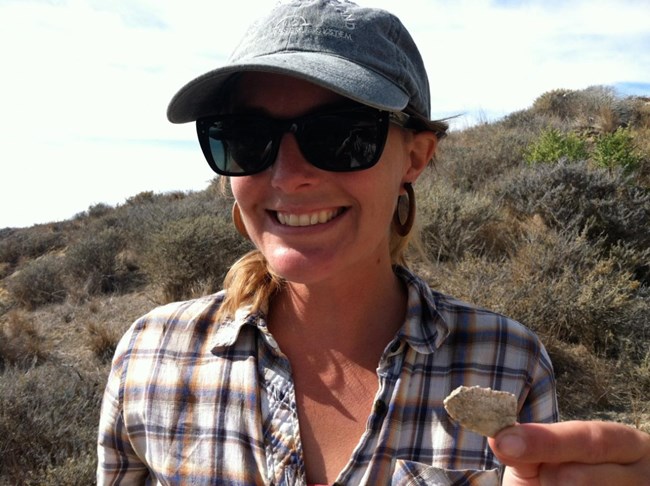
Chapter 29
Dr. Kristina Gill, Research Associate, Santa Barbara Botanic Garden, discusses the cultivation of plant foods by the people of the Channel Islands.The study of ancient plant remains found in archeological sites is known as archeobotany or paleoethnobotany. Researchers can study what people ate in the past in part because plant remains are well preserved through carbonization, a process that occurs when plants are burned. Thousands of years after they were initially burned–often during cooking accidents—they are still identifiable to the researchers who study them.
Many different plant foods supplied the people of the Channel Islands with the carbohydrates they needed to balance the rich fats and proteins in the marine foods like fish and sea mammals that were central to their diets.
One of the most important plant foods on the islands was blue dicks corms (bulblike stems), which are called cacomites in Spanish and shiq’o’n in Chumash. They grow underground and look like little potatoes. The bigger ones measure about 5 cm across. Blue dicks corms can be eaten raw or cooked in hot coals, but they were usually roasted overnight in large earth ovens.
An earth oven was made by building a fire at the bottom of a pit dug into the ground. Once the fire burned down to coals, the blue dicks corms were put in, and then everything was covered with soil to keep the heat and steam in while the food cooked. When the food was ready, the earth oven was opened up, and someone distributed the cooked corms to those gathered using a large abalone scoop as a serving tool.
When corms are roasted for a long time, they taste like sweet potatoes. But when they are eaten raw, they stick to your teeth because they contain so much starch.
When the Lone Woman met George Nidever’s hunting party on San Nicolas Island in 1853, she had blue dicks corms stored in her food supply. Carl Dittman, a member of Nidever’s party, reported in an oral history taken years later that the Lone Woman cooked some of her corms for the hunters:
“Taking some roots from two bags or sacks made of grass, she placed them in the coals and as soon as they were roasted she passed them around making motions for us to eat. One of the roots is commonly called Coco mote (cacomite) among the Californians; the other I do not know the name of” (Carl Dittman, Narrative of a Seafaring Life on the Coast of California, 1878).
The people of the Channel Islands harvested blue dicks corms by using a digging stick weighted with a round stone with a hole in the middle. They are called donut stones! Most ethnographic literature says that California blue dicks corms were harvested in the spring, after they flowered, but archeobotanical data from the islands show that they were also harvested in the fall. In fact, blue dicks could be harvested nearly year round, and they provided the islanders with a reliable, abundant food source. It was a staple for millennia.
Native people engaged in landscape management strategies that promoted the growth of blue dicks. For example, the repeated process of harvesting the corms with digging sticks worked to till the soil of wild blue dicks fields. Islanders also promoted the plant’s growth by primarily harvesting mature corms and by replanting cormlets (baby corms). They may also have used other means, such as controlled burning, to encourage the growth of this important food resource.
-
Listen to chapter 29 entry
Learn about plants eaten by American Indians on the Channel Islands.
Last updated: April 27, 2025
